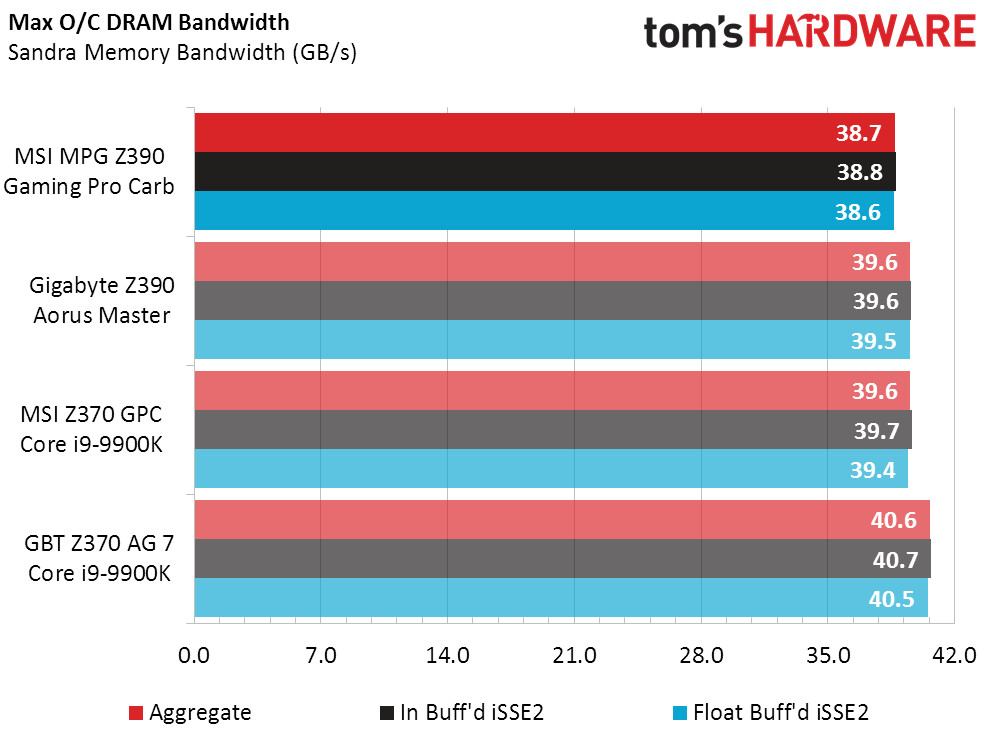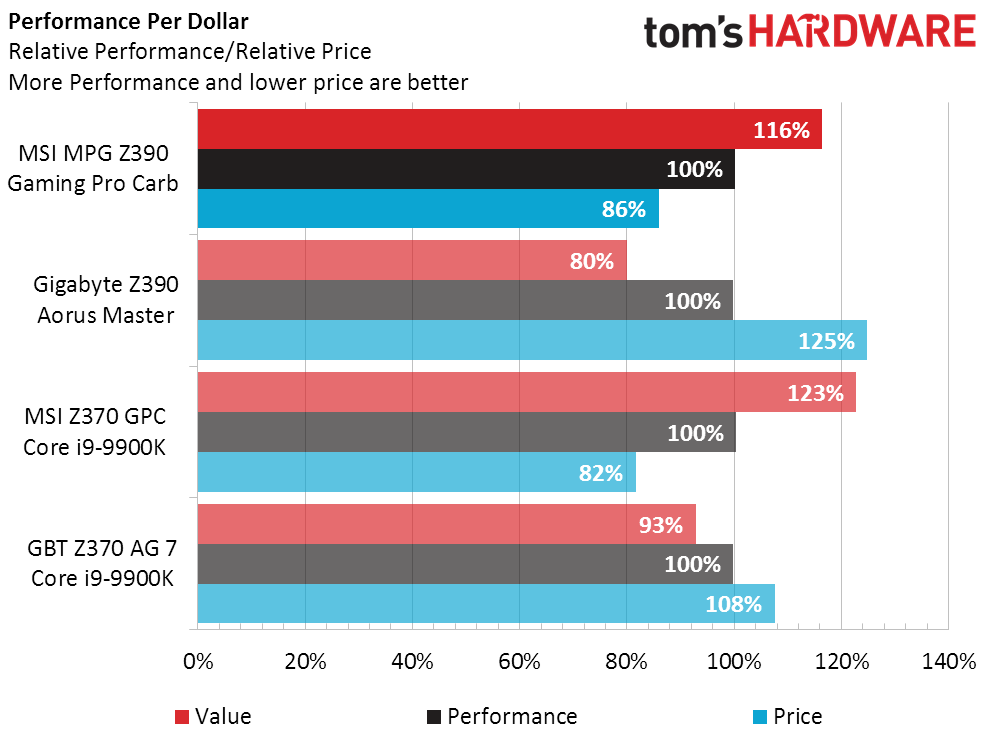MSI MPG Z390 Gaming Pro Carbon Review: Core i9 Value?
Why you can trust Tom's Hardware
Benchmark Results & Final Analysis
We disable motherboard-induced overclocks, along with XMP mode (which is occasionally tied to CPU overclocks), when performing our basic benchmark set. We also enable the CPU’s built-in power saving technologies, so that the best example of low idle power in a “CPU active” state can be gauged.
Synthetic Benchmarks
Since we do our best to eliminate motherboard-implemented overclocks, the only “magic sauce” ingredients that can juice performance are higher current thresholds and tighter advanced memory timings. And since nearly every “enthusiast” motherboard has thrown caution to the wind regarding Intel’s CPU current ratings, only advanced memory timings remain to differentiate these models. Since few of our benchmarks are optimized for quick memory timings, we don't expect much in the way of variance in our charts.
The great news is that apart from a couple graphics bench hiccups on the legacy Z370 Aorus Gaming 7, we’re seeing the boring charts we expected. The MPG Z390 Gaming Pro Carbon edged out competitors in Sandra Memory Bandwidth however, leading us to expect a small lead in at least one of our gaming tests.
3D Games
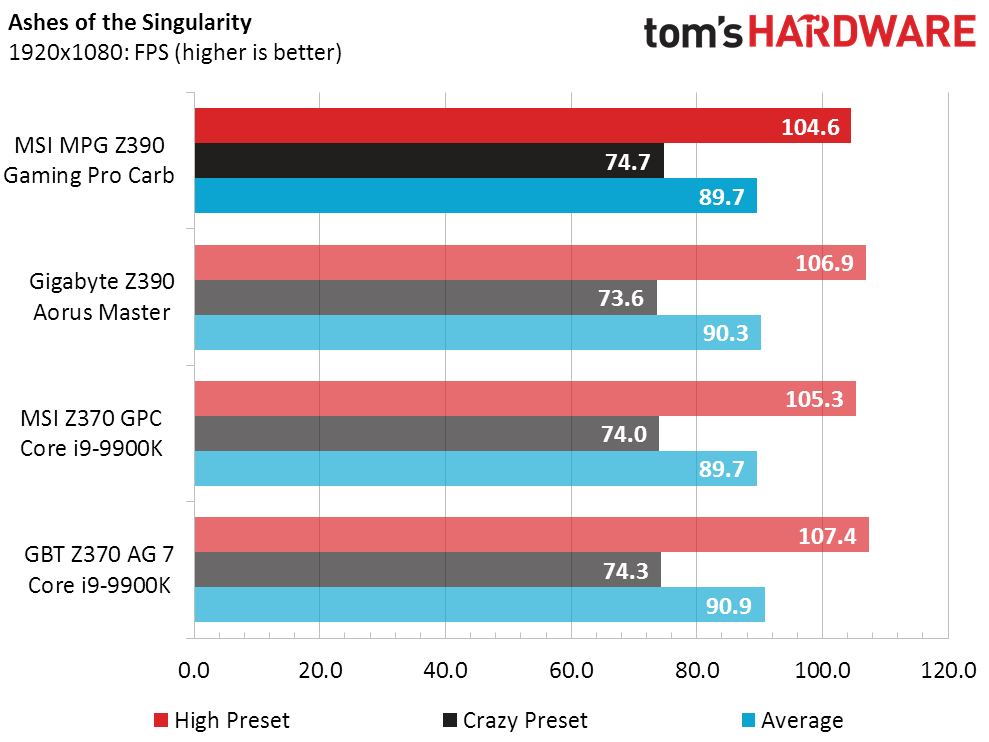

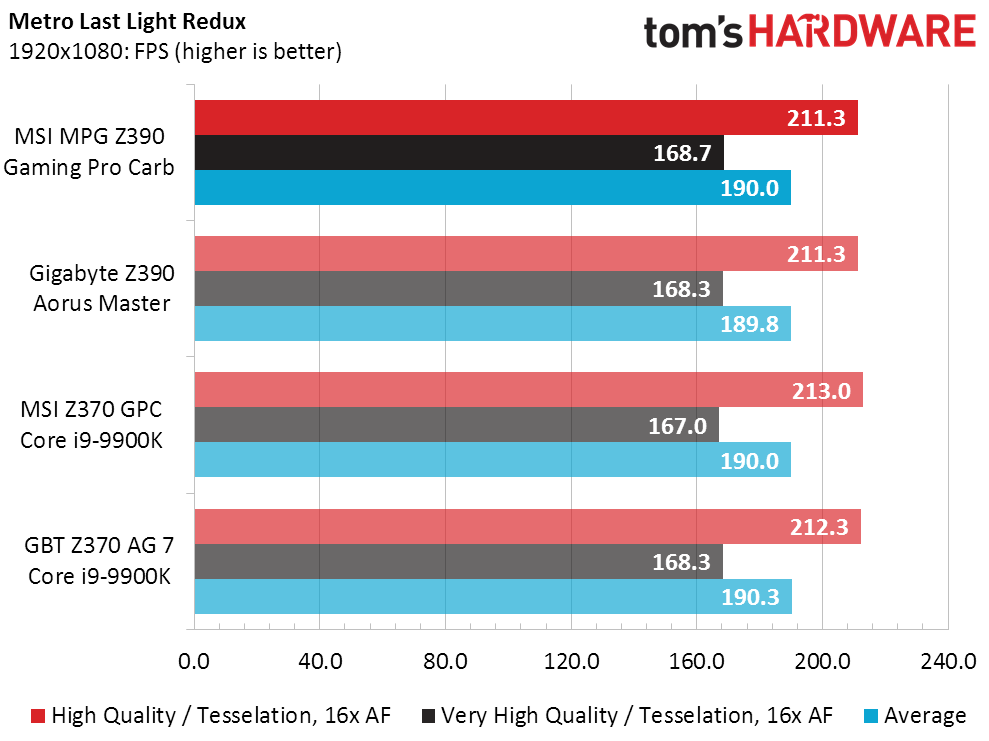
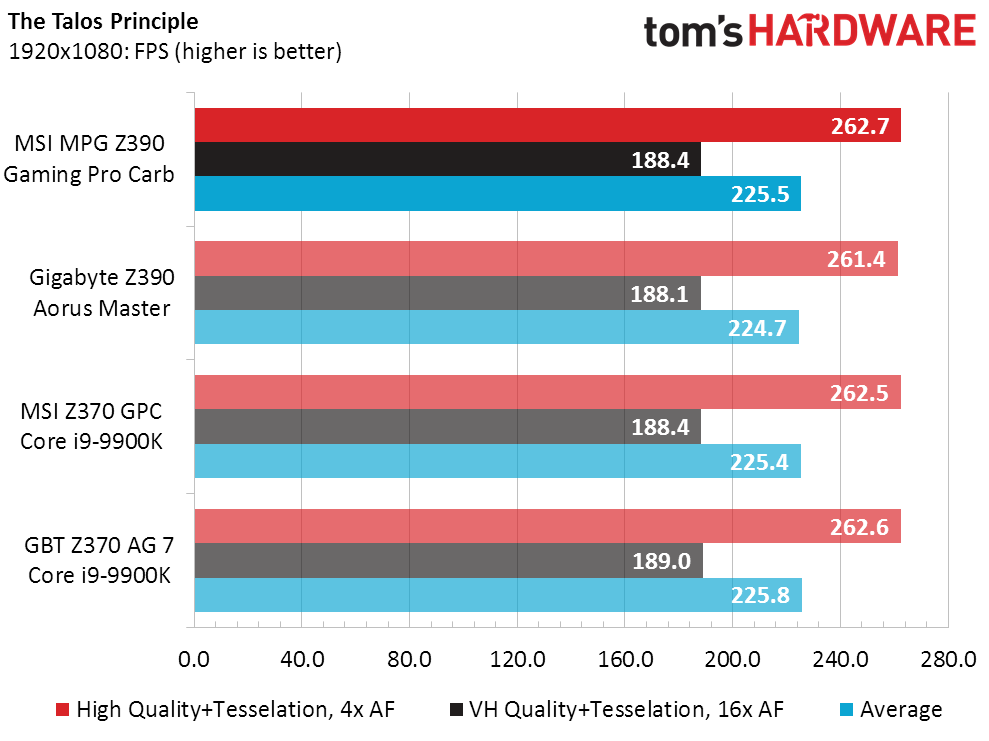
With a slightly higher Sandra Bandwidth score, we anticipated a slight win from the MPG Z390 Gaming Pro Carbon in the memory-bottlenecked F1 2015. But, that didn’t happen. Perhaps the new Core i9-9900K is beginning to challenge our expectations, but with differences this small, we’re willing to let that play out across a broader number of reviews.
Timed Applications
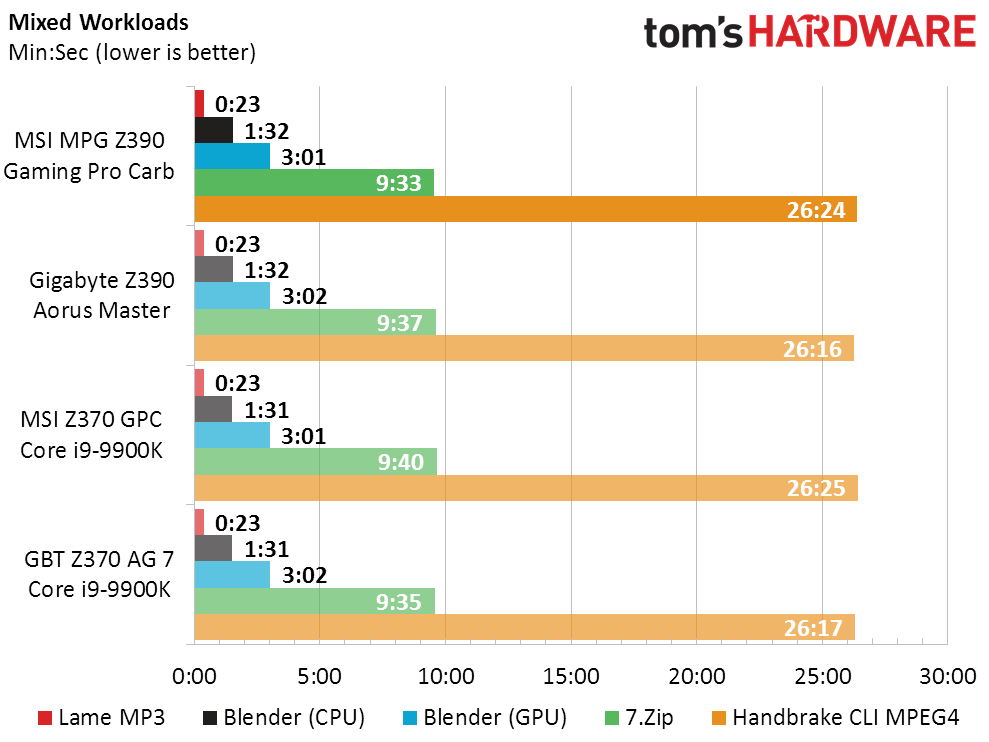
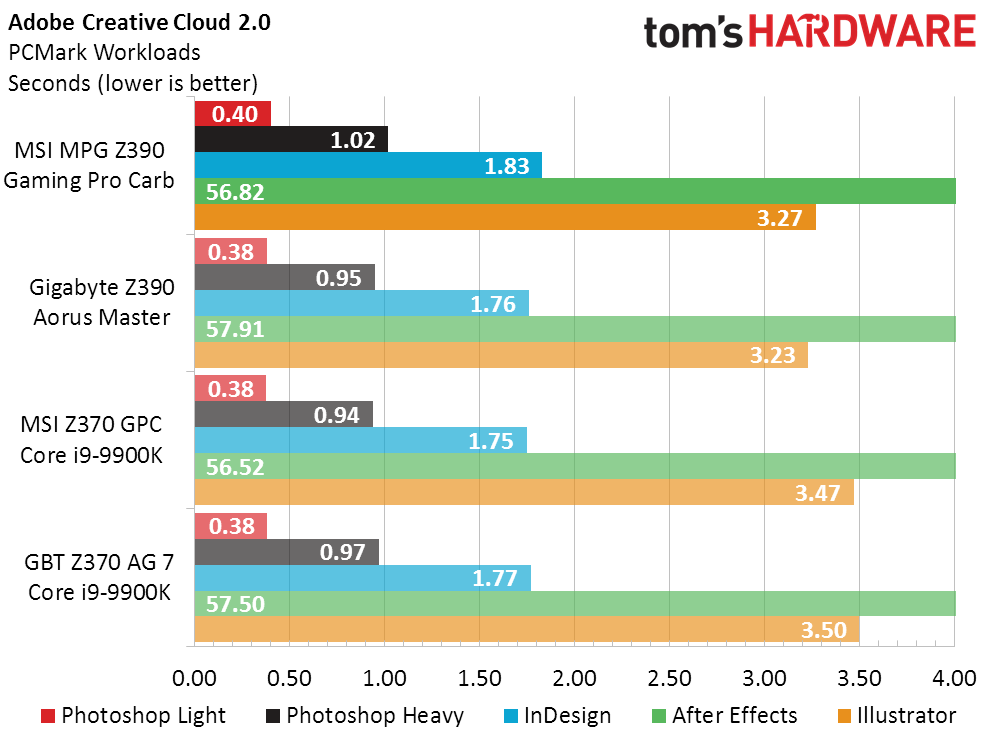
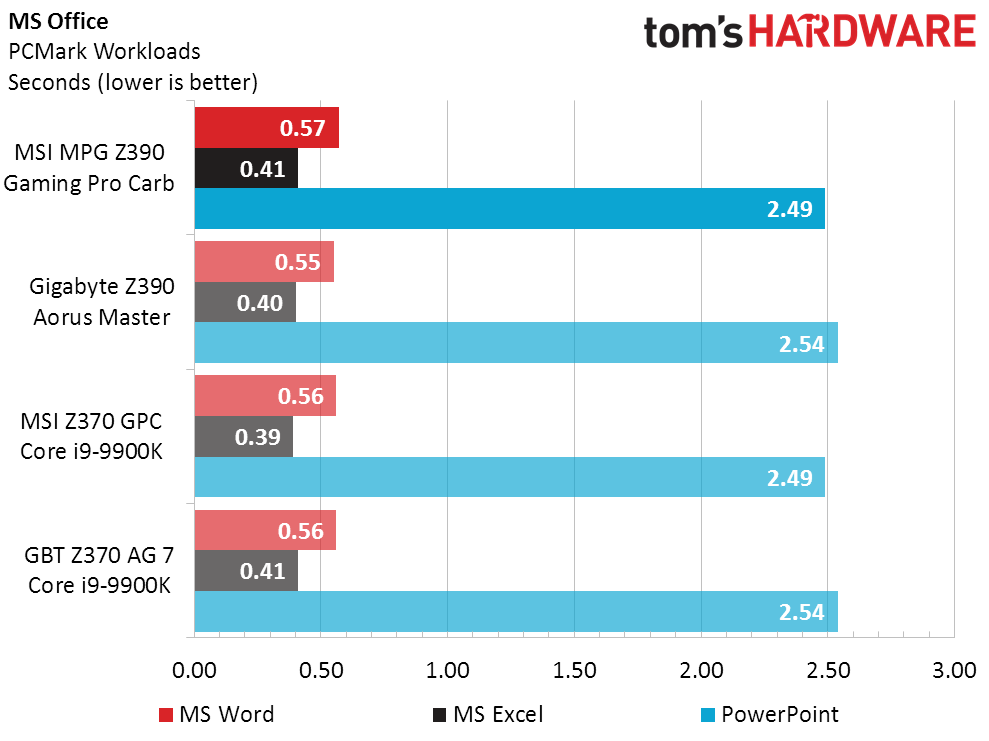
Faster computers take less time to finish these benchmarks, but the differences we see here are small and spread out to the point that no clear leader emerges for the entire suite. Taking a narrower view, the MPG Z390 Gaming Pro Carbon completed our Adobe CC benchmarks just behind the group average.
Power, Heat, & Efficiency
The MPG Z390 Gaming Pro Carbon idled down better than any other board in the test group. The MSI Z390 board drew more power at full load than any other in the test group. Comparatively, the old Z370 Gaming Pro Carbon (with new Core i9 firmware) successfully used slightly lower voltage to hold up our processor’s 4.7 GHz Intel Turbo Boost all-core-loaded frequency. So we can expect that board to score an efficiency win.

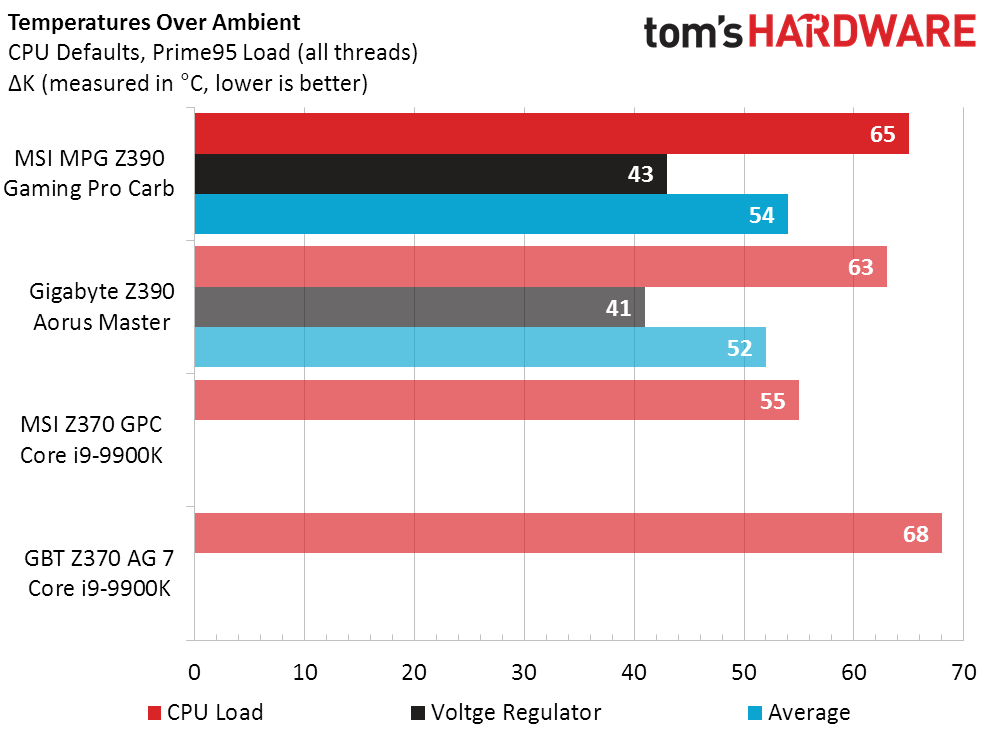
Since both Z370 motherboards required additional voltage regulator cooling to hold a full processor load for more than ten minutes, we removed those bars from their graphs. MSI claims that it has a cooler voltage regulator than its competitors, but our thermistor didn’t show that, and this could be uniquely related to its high power draw under Prime95 small-FFTs.
Get Tom's Hardware's best news and in-depth reviews, straight to your inbox.
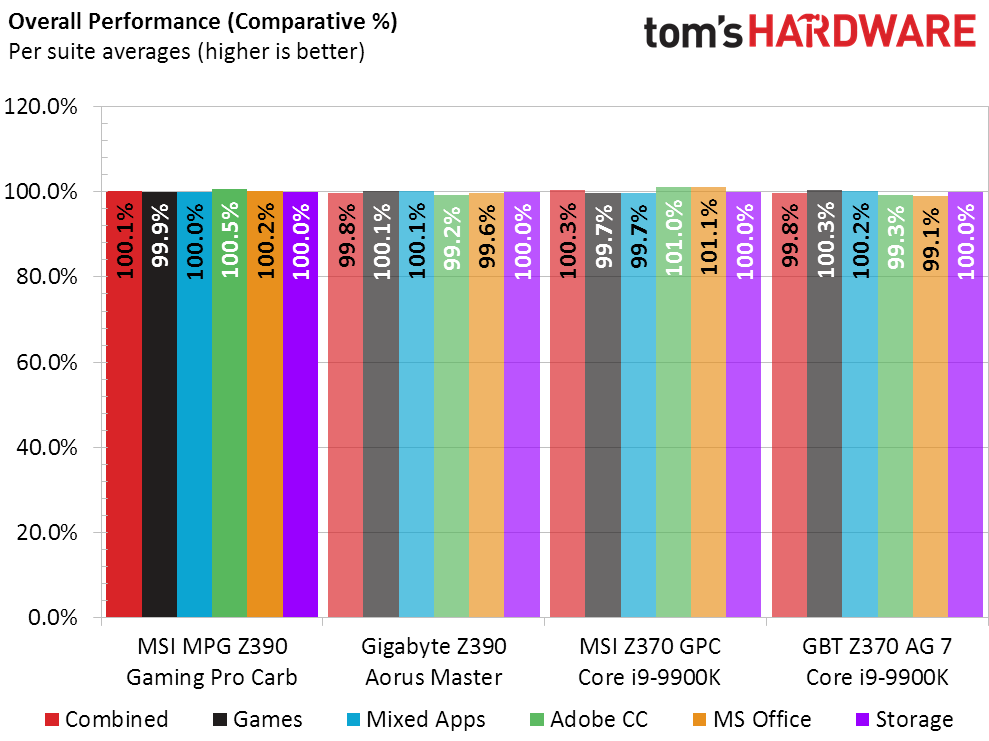
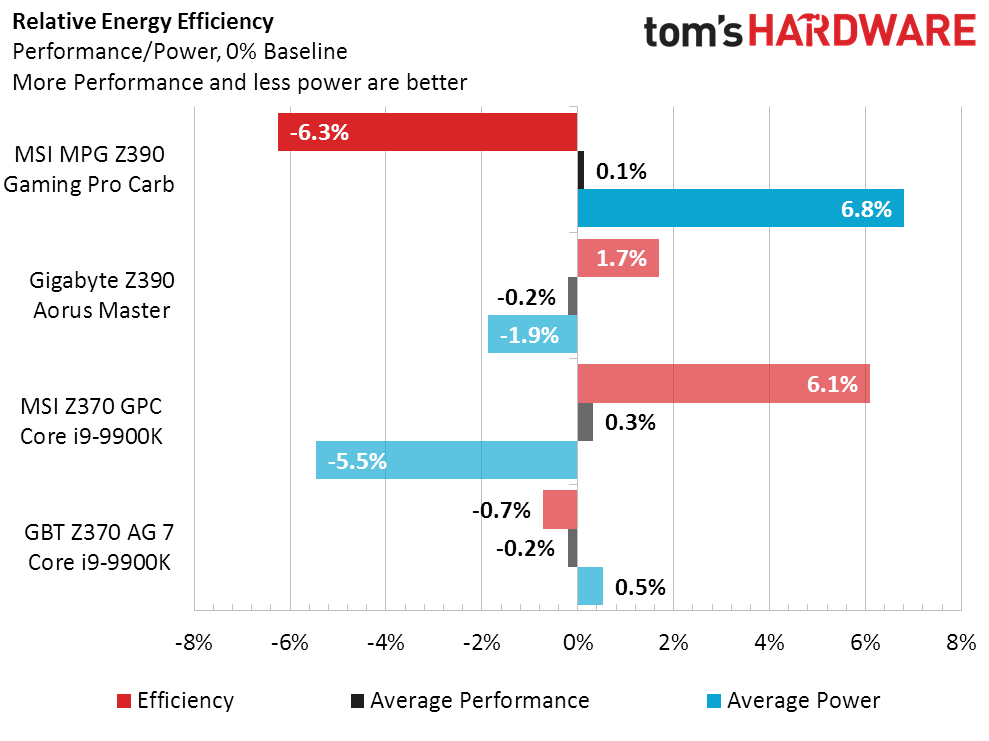
The MPG Z390 Gaming Pro Carbon beat the Z390 Aorus Master by 0.3 percent overall, which is too small to notice. More noticeable was its 8 percent loss in efficiency calculations that are skewed towards users who run their PCs at full load part of the time.
Overclocking
A pattern has emerged for our Core i9-9900K sample, where it reaches 4.95 GHz at 1.30V, and the additional voltage needed to get it past 5GHz puts its heat past the limits of our cooler. Since 1.30V has been our choice for LGA 1151 overclocking longevity from the outset, there’s no rush to change our motherboard evaluation configuration.
Having said that, the Z370 boards simply couldn’t output enough current to do any serious overclocking with the Core i9. The old boards did however challenge the new boards for DRAM overclocking supremacy.
Things look even worse in overclocked DRAM performance. We can only hope that new firmware will make the next round of Z390 tests a better match for our new memory.
Final Thoughts
What we said in our initial Z390 platform preview still applies: Those who already own a Z370 motherboard and an older processor, but want to upgrade to a new model, will find their best value in simply upgrading the firmware of their old board before installing the new CPU. Since older enthusiast market boards weren’t designed to power eight cores but to overclock six, most of them will supply enough current (if just barely) to support a new Core i9-9900K or Core i7-9700K CPU at full load. But if you’re running a liquid cooler with no fan near the voltage regulator, you’ll probably need to add one.
But, if you’re overclocking a Core i9-9900K, you’ll probably want a Z390 board to go with it. These new models are designed to power the extra cores, and should allow at least some overclocking headroom. In short, while many previous-generation Z370 board owners will be able to update firmware and drop in a new CPU that works just fine, those purchasing board to go with their new high-end 9th Gen Core CPU will want a Z390 model--especially given that, at least as of the this writing, there hasn't been a huge price increase.
Priced about $20 higher than the Z370 board it replaces, the MPG Z390 Gaming Pro Carbon is worth the extra money for those also shelling out for a new high-end CPU. And because the board it replaces was already a decent value, the same goes the MPG Z390 Gaming Pro Carbon.
MORE: Best Motherboards
MORE: How To Choose A Motherboard
MORE: All Motherboard Content
-
rantoc They say its SLI capable but yet have the same "stupid" 3 slots spacing resulting in the typical air starvation of the main card since it will be obstructed by the second card. Todays big custom air cooled cards are 2.5 to 3 pcie slots wide, not the old typical 2 pcie - When will the MB makers "evolve" to the new width of the cards for multigpu and who will be the first?Reply -
Crashman Reply
Even the founder's edition cards are only two slots, and most of the oversized cards are 2.5 slots. A 3-slot cooling design is a defective design, and such cards should be called out for that. We're already putting the top x16 slot in the case's 2nd slot hole to make space for oversized CPU coolers, voltage regulators and DIMM cooling, and there's a scarcity of 8-slot cases, so two three-slot cards' at 4-slot spacing doesn't even make sense. For those reseaons, if I review a board with the 2nd x16 slot aligned to the cases 6th card hole, I'll probably just write it off as a bad idea.21416966 said:They say its SLI capable but yet have the same "stupid" 3 slots spacing resulting in the typical air starvation of the main card since it will be obstructed by the second card. Todays big custom air cooled cards are 2.5 to 3 pcie slots wide, not the old typical 2 pcie - When will the MB makers "evolve" to the new width of the cards for multigpu and who will be the first?
-
wakoavo Great informative article !Reply
I have a question: Since the MPG z390 Gaming AC has the same VRM design, would that mean that it would be ok to pair a 9900k with it ? I recently got the Gaming AC model (won it online lolz) and was wondering if it would be able to control the 9900k xD -
Crashman Reply
They're the same board, this one even has the slot for the AC card, so everything said here applies there.21478211 said:Great informative article !
I have a question: Since the MPG z390 Gaming AC has the same VRM design, would that mean that it would be ok to pair a 9900k with it ? I recently got the Gaming AC model (won it online lolz) and was wondering if it would be able to control the 9900k xD

